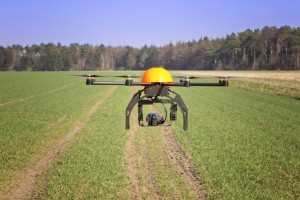Much of the attention for drone technology has been focused on Amazon’s package delivery service and for the military, where drones are used for spying and gathering intel. The biggest issue with the implementation of drones in urban cities is how to manage hundreds of UAV aircraft in open airspace, something the Federal Aviation Administration (FAA) has struggled with. As a results, little drone activity has been used by large corporations.
However, perhaps the biggest industry potential for drone productivity lies in the agriculture industry. Agriculture operations mostly take place on rural farms, away from heavily populated areas. This restricts the privacy concerns many individuals have regarding drones, as well as the issue of crowded airspace.
Drones can improve agriculture industry’s productivity while also cutting costs for farmers. Some of the benefits drones provide are listed below:
- Crop monitoring. This is important to help farmers locate areas that need to be rid of insects, crops that need water, etc.
- Security
- Livestock protection
- Spreading of pesticides in difficult terrain
- Monitoring soil erosion
- Constant crop monitoring
As technology evolves and infrared cameras are introduced to drones, their importance for the agriculture industry will increase. We will see drones used in agriculture much faster than by companies like Amazon or other delivery service (pizza services have even began researching the possibility of drones).
Drone technology is moving fast and the FAA needs to keep up with current times. Limiting airspace of any drone activity limits the agricultural industry and its potential productivity.
